Welcome to our free classical music site

Do you write about classical music? Are you a blogger? Want to team up with Classical Connect? Send us a message, let's talk!

Do you write about classical music? Are you a blogger? Want to team up with Classical Connect? Send us a message, let's talk!
August 28, 2017. Pachelbel and Locatelli. Before we turn to our birthday boys, two composers born in the 17th century, we’d like to mention a much younger musician. Yoo Jin Jang was born in 1990 in South Korea. After studying in her native country, she moved to the US. At the New England Conservatory, she studied with Miriam Fried and is currently pursuing her Doctorate at that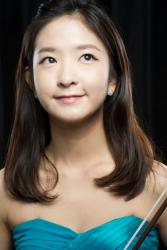 school. Ms. Jang has won a number of competitions, among them the 2013 Munetsugu Violin Competition in Japan, for which she was loaned the 1697 “Rainville” Stradivari violin. In 2012 Ms. Jang founded the Kallaci String Quartet. She recently played a Dame Myra Hess concert in Chicago, and here’s her performance of a rarely-played Violin Sonata by Felix Mendelssohn. The sonata was never published during Mendelssohn’s time, then got lost and was discovered by Yehudi Menuhin only in 1953! Renana Gutman is on the piano. And as a little encore of sorts, here’s a Tango-Étude No. 3 for Solo Violin, again performed by Yoo Jin Jang.
school. Ms. Jang has won a number of competitions, among them the 2013 Munetsugu Violin Competition in Japan, for which she was loaned the 1697 “Rainville” Stradivari violin. In 2012 Ms. Jang founded the Kallaci String Quartet. She recently played a Dame Myra Hess concert in Chicago, and here’s her performance of a rarely-played Violin Sonata by Felix Mendelssohn. The sonata was never published during Mendelssohn’s time, then got lost and was discovered by Yehudi Menuhin only in 1953! Renana Gutman is on the piano. And as a little encore of sorts, here’s a Tango-Étude No. 3 for Solo Violin, again performed by Yoo Jin Jang.
Pietro Locatelli was also a violinist, and a pretty good one: he toured across Europe and his compositions, which we assume he could play well, present technical challenges even to modern violinists. Locatelli was born on September 3rd of 1695 in Bergamo. At the age of 14 he became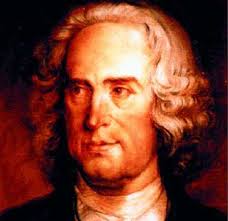 a member of the cappella musicale at the local church of Santa Maria Maggiore. In 1711, he went to Rome where he studied with students of Arcangelo Corelli and maybe even with the master himself. He came under the patronage of Camillo Cybo, a major-domo of the Pope Clement XI (Cybo, a great grandnephew of Pope Innocent X, was later elevated to Cardinal). Locatelli dedicated his Opus one, Twelve Concerti Grossi, to Cybo. He also became one of the favorite musicians of that famous patron of arts, Cardinal Pietro Ottoboni. Locatelli left Rome in 1723 and during the following five years traveled across Italy and Germany. He performed at major courts – in Berlin for the Prussian court, in Dresden for Augustus II of Saxony. Most of Locatelli’s compositions also come from this period. In 1727 Locatelli moved to Amsterdam, where he was to live for the rest of his life (he died on March 30th of 1764). There he played mostly for the rich music lovers and traded in violin strings. He composed very little. Here’s one violinist who wouldn't be stymied by Locatelli’s technical challenges: Leonid Kogan. He’s playing the Violin Sonata in F minor, op. 6 No. 7 "At the tomb." Andrej Mytnik is at the piano.
a member of the cappella musicale at the local church of Santa Maria Maggiore. In 1711, he went to Rome where he studied with students of Arcangelo Corelli and maybe even with the master himself. He came under the patronage of Camillo Cybo, a major-domo of the Pope Clement XI (Cybo, a great grandnephew of Pope Innocent X, was later elevated to Cardinal). Locatelli dedicated his Opus one, Twelve Concerti Grossi, to Cybo. He also became one of the favorite musicians of that famous patron of arts, Cardinal Pietro Ottoboni. Locatelli left Rome in 1723 and during the following five years traveled across Italy and Germany. He performed at major courts – in Berlin for the Prussian court, in Dresden for Augustus II of Saxony. Most of Locatelli’s compositions also come from this period. In 1727 Locatelli moved to Amsterdam, where he was to live for the rest of his life (he died on March 30th of 1764). There he played mostly for the rich music lovers and traded in violin strings. He composed very little. Here’s one violinist who wouldn't be stymied by Locatelli’s technical challenges: Leonid Kogan. He’s playing the Violin Sonata in F minor, op. 6 No. 7 "At the tomb." Andrej Mytnik is at the piano.
As we wrote in 2014, while celebrating Johann Pachelbel’s birthday, had he been alive, he would probably have been very upset with the enormous popularity of his Cannon in D. During his lifetime, Pachelbel, who was born on September 1st of 1653 in Nuremberg, Bavaria, was famous as composer and organist. He worked in Vienna as an organist at the St. Stephen’s Cathedral, in Eisenach as a court organist to the Duke of Saxe-Eisenach, and then in Erfurt, where he became close with many of the family of Bachs. Eventually he settled in Nuremberg, where in 1699 he composed one of his most important pieces,Hexachordum Apollinis. Here’s Aria Tertia from this collection. John Butt is on the organ.
PermalinkAugust 21, 2017. Debussy, Krenek and Stockhausen. We have a bit of a challenge: on the one hand, Debussy, one of the most popular composers ever, was born this week. On the other, this same week brings the anniversaries of two very significant composers, who strongly affected the development of 20th century Western music. The problem is that their music is challenging and with few exceptions not easy on the ear. These composers are Ernst Krenek and Karlheinz Stockhausen. As for Debussy: here’s something that’s performed not as often as the Préludes or Suite Bergamasque: the first act from his opera Pelléas & Mélisande. Pierre Boulez conducts the Royal Opera House Orchestra. With Donald McIntyre and Elisabeth Söderström. And now to things more adventuresome.
Ernst Krenek was born in Vienna on August 23rd of 1900. His father was Czech (“r” in Krenek was originally an ř, as in Dvořak and pronounced as “rzh”). He studied with Franz Schreker, who these days is almost forgotten but back in the early 20th century was the second most popular opera composer (after Richard Strauss). In 1920 Krenek moved to Berlin, met many musicians and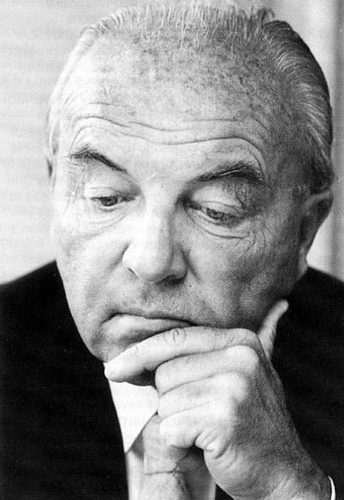 became part of a very active musical scene. In 1922, he met Alma Mahler and her daughter Anna. Alma introduced Krenek to Alban Berg, and Anna asked him to complete her father’s Tenth Symphony. Anna Mahler and Kreken got married in 1924 but the marriage lasted less than a year. In 1923 the premier of Krenek’s Second Symphony, which doesn’t sound too daring today, created an uproar. In the aftermath, Krenek moved to Switzerland, where he met Stravinsky (they had a contentious relationship). In 1925 Krenek went to Paris, where he became involved with the composers of Les Six; under their influence he decided that his music should be simpler. From the neo-Romantic period that followed come several operas, including Der Diktator based on the life of Mussolini. In 1927 Krenek wrote the opera Jonny spielt auf, about a black jazz violinist. Here’s an excerpt (A Hotel Room in Paris) from the recording made in 1964 with Lucia Popp, other soloists and the Vienna Volksoper Orchestra conducted by Heinrich Hollreiser. Jonny spielt auf was a tremendous success (even though it sounds somewhat dated now) and afforded Krenek financial freedom. Several years later the opera would be banned by the Nazis. Krenek moved to Vienna where he resumed his friendship with Berg and Webern. In Vienna, he wrote a 12-tone opera Karl V, but the German premier was cancelled by the Nazis. In March of 1938 Germany annexed Austria and shortly after Krenek emigrated to America. In the US, Krenek taught in several music schools; his longest tenure was at Hamline University, from 1942 to 1947. That year he moved to Los Angeles and later spent several summers teaching at Darmstadt. There, as it happened, he was eclipsed by the rising stars, Boulez and Stockhausen. Nevertheless, his interest in the 12-tone and serial music led to a large number of composition created in the mid-1950s and 1960s. He continued writing music till well into his 80s. In 1982, he was made an honorary citizen of Vienna. Krenek died in Palm Springs onDecember 22nd of 1991. Here is his Third Piano Sonata, from 1943. It’s performed by Glenn Gould.
became part of a very active musical scene. In 1922, he met Alma Mahler and her daughter Anna. Alma introduced Krenek to Alban Berg, and Anna asked him to complete her father’s Tenth Symphony. Anna Mahler and Kreken got married in 1924 but the marriage lasted less than a year. In 1923 the premier of Krenek’s Second Symphony, which doesn’t sound too daring today, created an uproar. In the aftermath, Krenek moved to Switzerland, where he met Stravinsky (they had a contentious relationship). In 1925 Krenek went to Paris, where he became involved with the composers of Les Six; under their influence he decided that his music should be simpler. From the neo-Romantic period that followed come several operas, including Der Diktator based on the life of Mussolini. In 1927 Krenek wrote the opera Jonny spielt auf, about a black jazz violinist. Here’s an excerpt (A Hotel Room in Paris) from the recording made in 1964 with Lucia Popp, other soloists and the Vienna Volksoper Orchestra conducted by Heinrich Hollreiser. Jonny spielt auf was a tremendous success (even though it sounds somewhat dated now) and afforded Krenek financial freedom. Several years later the opera would be banned by the Nazis. Krenek moved to Vienna where he resumed his friendship with Berg and Webern. In Vienna, he wrote a 12-tone opera Karl V, but the German premier was cancelled by the Nazis. In March of 1938 Germany annexed Austria and shortly after Krenek emigrated to America. In the US, Krenek taught in several music schools; his longest tenure was at Hamline University, from 1942 to 1947. That year he moved to Los Angeles and later spent several summers teaching at Darmstadt. There, as it happened, he was eclipsed by the rising stars, Boulez and Stockhausen. Nevertheless, his interest in the 12-tone and serial music led to a large number of composition created in the mid-1950s and 1960s. He continued writing music till well into his 80s. In 1982, he was made an honorary citizen of Vienna. Krenek died in Palm Springs onDecember 22nd of 1991. Here is his Third Piano Sonata, from 1943. It’s performed by Glenn Gould.
Karlheinz Stockhausen, one of the most important German composers of the second half of the 20th century, was born on August 22nd of 1928. He deserves a full entry and we’ll do it another time. Here’s just a taste: Klavierstück IX, performed by Pierre-Laurent Aimard.Permalink
August 14 2017. Ibert, Porpora, Enescu. The French composer Jacques Ibert was born in Paris on August 15th of 1890. His father was a successful trader and his mother an amateur pianist who studied with the Conservatory professors. Jacques started studying the violin at the age of four and later took piano lessons. In his youth, he supported himself as an accompanist and a cinema pianist. He took several courses at the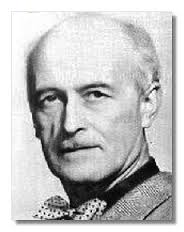 Paris Conservatory and attended private classes with André Gedalge, a teacher and composer. There he met Arthur Honegger and Darius Milhaud, two young composers who would later, together with Poulenc, Auric, Durey and Tailleferre form a group called Les Six. Ibert never joined in as during those years he stayed mostly away from Paris: during the Great War, he was a naval officer and then, returning to Paris, he won the Prix de Rome on his first attempt and went to Italy. This was a remarkable achievement considering that Ibert was absent from practically any music studies for almost four war years. The first concert of Ibert’s works, in 1922, was conducted by Gabriel Pierné (his birthday is also this week, on August 16th; he was born in 1863). In 1937, he was made the director of the Académie de France at the Villa Medici, a position he held till 1960. Ibert died in Paris on February 5th of 1962. Here’s Ibert’s Flute Concerto, with Emmanuel Pahud as the soloist.
Paris Conservatory and attended private classes with André Gedalge, a teacher and composer. There he met Arthur Honegger and Darius Milhaud, two young composers who would later, together with Poulenc, Auric, Durey and Tailleferre form a group called Les Six. Ibert never joined in as during those years he stayed mostly away from Paris: during the Great War, he was a naval officer and then, returning to Paris, he won the Prix de Rome on his first attempt and went to Italy. This was a remarkable achievement considering that Ibert was absent from practically any music studies for almost four war years. The first concert of Ibert’s works, in 1922, was conducted by Gabriel Pierné (his birthday is also this week, on August 16th; he was born in 1863). In 1937, he was made the director of the Académie de France at the Villa Medici, a position he held till 1960. Ibert died in Paris on February 5th of 1962. Here’s Ibert’s Flute Concerto, with Emmanuel Pahud as the soloist.
Nicola Porpora was born on August 17th of 1686. Last year, on Porpora’s 330th anniversary, we posted a detailed entry about this wonderful composer and music teacher (here), so today we’ll just play the aria Sì pietoso il tuo labbro ragiona from his opera Semiramide riconosciuta. In the opera, this aria is sung by Merteo, an Egyptian prince, brother of Semiramide. At the premier this role was performed by the great soprano castrato (and Porpora’s student) Carlo Maria Broschi, better known as Farinelli. Here it is sung by the Swedish mezzo-soprano Ann Hallenberg; Christophe Rousset conducts the ensemble Les Talens Lyriques. The music is wonderful and makes one wonder why Porpora’s operas aren’t staged more often.
George Enescu’s birthday is also this week, on August 19th. Enescu was born in a small village (later renamed in his honor into “George Enescu”) in Moldavia, a historical province of Romania. A child prodigy, he started composing at the age of five. At the age of seven, he was admitted to the Vienna Conservatory, the youngest person ever. There he studied the violin, the piano and composition. At the age of 10 he was presented to the court and played to the Emperor Franz Joseph. At the age of 13 he moved to Paris and went to the Paris Conservatory where he studied with André Gedalge, whom we mentioned above as a teacher of Jacques Ibert (Gedalge also taught Ravel, Honegger and many other soon to be famous composers). Like Bartók who was influenced by the folk music of Hungary and Romania, Enescu liberally borrow from the tunes of his native country. In 1901, at just twenty years old, he wrote two Romanian Rhapsodies, Op. 11, which remained his most popular compositions (quite to his chagrin, as he thought they overshadowed his more mature compositions). Enescu traveled to the US for the first time in 1923 and many times thereafter, performing as a conductor and a violinist. He lived mostly in Paris and Bucharest. During World War II he stayed in Romania, and made several recordings with the great pianist Dinu Lipatti. When the Soviets took over, he moved back to Paris. He got more involved in teaching the violin. Among his students were such future greats as Yehudi Menuhin, Ivry Gitlis, Arthur Grumiaux, and Ida Haendel. Menuhin said that Enescu was "the most extraordinary human being, the greatest musician and the most formative influence" he had ever experienced. Here’s is his Romanian Rhapsody No. 2, Op. 11. Iosif Conta conducts the National Radio Orchestra of Romania.
Permalink
August 7, 2017. Jolivet and Biber. A very interesting French composer, André Jolivet was born on August 8th of 1905 in Paris. In his childhood, he studied the cello but never went to the conservatory (his parents encouraged him to become a teacher). For a while he studied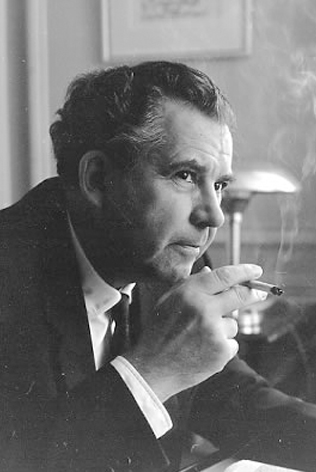 composition with Paul Le Fem, a composer and critic. In his youth Jolivet was influenced by Debussy and Ravel, but it all changed when he became familiar with atonal music: in December of 1927 he attended a concert at the Salle Pleyel during which Pierrot lunaire and several other Schoenberg pieces were performed. That concert changed his life. Soon after he became a pupil of Edgard Varèse, an influential French-American avant-garde composer, whose Amériques was another strong influence. He also befriended Olivier Messiaen, who was very helpful in promoting Jolivet’s music. During the war Jolivet moved away from the atonality, saying that he strives for “evasion and relaxation,” understandable goals during the difficult time but ones that were not shared by his friend Messaien. Jolivet wrote a comic opera, Dolorès, and the ballet Guignol et Pandore. After the war Jolivet became the musical director of the Comédie Française but continued to compose till his last days. He died in Paris on December 20th of 1974.
composition with Paul Le Fem, a composer and critic. In his youth Jolivet was influenced by Debussy and Ravel, but it all changed when he became familiar with atonal music: in December of 1927 he attended a concert at the Salle Pleyel during which Pierrot lunaire and several other Schoenberg pieces were performed. That concert changed his life. Soon after he became a pupil of Edgard Varèse, an influential French-American avant-garde composer, whose Amériques was another strong influence. He also befriended Olivier Messiaen, who was very helpful in promoting Jolivet’s music. During the war Jolivet moved away from the atonality, saying that he strives for “evasion and relaxation,” understandable goals during the difficult time but ones that were not shared by his friend Messaien. Jolivet wrote a comic opera, Dolorès, and the ballet Guignol et Pandore. After the war Jolivet became the musical director of the Comédie Française but continued to compose till his last days. He died in Paris on December 20th of 1974.
In 1933 Jolivet’s teacher Varèse returned to the USA leaving him six objects: a puppet made of wood and copper, a statue of a Balinese princess, a straw goat, and three figurines created by the sculptor Alexander Calder: a magic bird, a winged horse and a cow. As Jolivet said himself, they became his companions and familiar fetishes. In 1935, he composed Mana for piano, naming a movement after each object. Here they are, performed by the pianist Christiane Mathé: Beaujolais, L'oiseau, La Princesse de Bali, La Chèvre, La Vache and Pégase.
Heinrich Ignaz Biber, an Austrian-Bohemian composer, was born on August 12th, 1644 in Wartenberg, a small town in Bohemia which is now called Stráž pod Ralskem. Just to place Biber historically within the Germanic music tradition: he was seven years younger than Dieterich Buxtehude, nine years older thanJohann Pachelbel, and about 40 years older than J.S. Bach. Little is known about his childhood, but around 1668 he was working at the court of Prince Eggenberg in Graz, Austria, and two years later he was already in Kremsier, Moravia, being employed by the Bishop of Olomouc. By then the 26-year-old Biber was already quite famous as a violin player. In 1670 Biber, without asking the Bishop’s permission, left Olomouc and joined the court of the Archbishop of Salzburg. He stayed there for the rest of his life. Biber’s career flourished: he became the Kapellmeister in charge of all music-making at the court of the Archbishop (100 years later the same court would employ the young Mozart), he was titled by the Emperor Leopold, and the Archbishop appointed him lord high steward. While in Salzburg, Biber wrote quite a lot of church music, including several masses and two Requiems, a number of ensemble pieces and several operas. His most famous works in all of his output is a collection of 16 pieces, 15 sonatas plus a Passacaglia for solo violin, known as either The Rosary Sonatas or the Mystery Sonatas; they were written around 1676. This is not his only music that sounds interesting today. Here, for example, is his Sonata no. 3 in F Major from a collection of Violin sonatas published in 1681. The last section (it starts at 7:53) develops in a very unusual way and the ending is quite startling. John Holloway is the solo violinist. Aloysia Assenbaum plays the organ and Lars Ulrik Mortensen is on the harpsichord.
PermalinkJuly 31, 2017. Granados and Schuman. We got so involved with the masters of Renaissance music, especially the great Spaniard Tomás Luis de Victoria, that we missed a very special anniversary: July 27th marked the 150th anniversary of the birth of another Spanish composer, Enrique Granados. More than three centuries separate Victoria and Granados, and during that period the music in Spain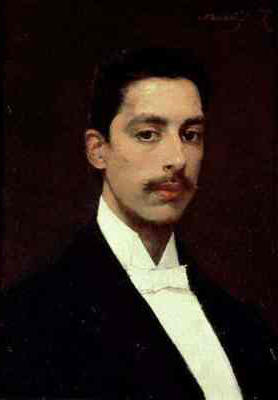 didn’t develop in a straight line. To be fair, arts never develop in a constant progression, even Italy and Germany at some point or other experienced periods of decline. (Flemish music dissolved completely, but that was more a matter of political rearrangements than cultural trends). In the 15th and especially16th century Spain was one of the musical centers of Europe, close to the Franco-Flemish school since Charles I was not just the King of Spain but the Emperor of the Holy Roman Empire. His possessions included Burgundy, the Netherlands and parts of Italy, and Spanish musicians traveled across the realm, learning from the locals while the Flemish and the Italians gravitated toward the courts of Spain. The following Baroque period was still quite productive (Domenico Scarlatti spent much of his life in Spain) but by the end of the 17th century musical culture was in a decline. This decline continued longer than in any other country of major cultural significance. And it stopped only with the arrival of a brilliant group of composers in the second half of the 19th century, Isaac Albéniz, Manuel de Falla, Joaquin Turina, and of course Enrique Granados. We’ve written about Granados many times (for example, here), so we’ll address some of his works (his output was not very large as he tragically died at the age of 50). While his piano pieces, such as Twelve danzas españolas, Goyescas Eight Valses Poéticos are among his most popular pieces, Granados also wrote many wonderful songs. One cycle is called Tonadillas al estilo antiguo (Little tunes in ancient style). We’ll hear three of them, El tra la la y el punteado, El majo tímido and La maja dolorosa. They are performed by one of the greatest mezzo-sopranos of the 20th century, Teresa Berganza, with Félix Lavilla at the piano (at the time of the recording, 1961, Berganza and Lavilla were married).
didn’t develop in a straight line. To be fair, arts never develop in a constant progression, even Italy and Germany at some point or other experienced periods of decline. (Flemish music dissolved completely, but that was more a matter of political rearrangements than cultural trends). In the 15th and especially16th century Spain was one of the musical centers of Europe, close to the Franco-Flemish school since Charles I was not just the King of Spain but the Emperor of the Holy Roman Empire. His possessions included Burgundy, the Netherlands and parts of Italy, and Spanish musicians traveled across the realm, learning from the locals while the Flemish and the Italians gravitated toward the courts of Spain. The following Baroque period was still quite productive (Domenico Scarlatti spent much of his life in Spain) but by the end of the 17th century musical culture was in a decline. This decline continued longer than in any other country of major cultural significance. And it stopped only with the arrival of a brilliant group of composers in the second half of the 19th century, Isaac Albéniz, Manuel de Falla, Joaquin Turina, and of course Enrique Granados. We’ve written about Granados many times (for example, here), so we’ll address some of his works (his output was not very large as he tragically died at the age of 50). While his piano pieces, such as Twelve danzas españolas, Goyescas Eight Valses Poéticos are among his most popular pieces, Granados also wrote many wonderful songs. One cycle is called Tonadillas al estilo antiguo (Little tunes in ancient style). We’ll hear three of them, El tra la la y el punteado, El majo tímido and La maja dolorosa. They are performed by one of the greatest mezzo-sopranos of the 20th century, Teresa Berganza, with Félix Lavilla at the piano (at the time of the recording, 1961, Berganza and Lavilla were married).
American composer William Schuman was born on August 4th of 1910 in Manhattan. Schumann is one of the most significant tonal composers of the mid-20th century. He started seriously composing late, after hearing in 1930 a concert conducted by Toscanini (eventually he removed from publication all works written before 1938). Schuman studied with the composer Roy Harris; Serge Koussevitzky, conductor of the Boston Symphony Orchestra, became a friend and a major supporter. In addition to composing, which he did for the rest of his life, Schuman also had a big administrative career: he was the president of the Juilliard School, where he was instrumental in creating the Juilliard String Quartet. For several years he was also the president of the Lincoln Center. Hear is the second section of Schuman’s New England Triptych, “When Jesus Wept.” The Eastman-Rochester Orchestra is conducted by Howard Hanson.Permalink
July 24, 2017. Tomás Luis de Victoria. A week ago, when we presented three great composers of the High Renaissance, we gave Tomás Luis de Victoria short shift. We’ll try to correct it in this post. A younger contemporary of Palestrina and Orlando di Lasso, Victoria was born in 1548 in a small town of Sanchidrián near Ávila. We know some unusual facts about him, for example, that his mother was from a converso family, that is a family of Spanish Jews who were forced to convert to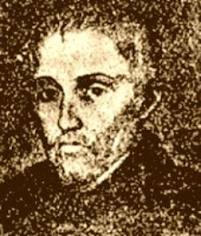 Catholicism. Victoria went to school in Ávila, sang as a choirboy in the local cathedral and probably learned there to play the organ. The cathedral of Ávila was one of Spain’s musical centers, and Victoria’s teachers were prominent composers and musicians. Some speculate that while in Ávila, he met Antonio de Cabezón, the famous blind composer, second in fame only to Cristóbal de Morales. Somewhere around 1563, once his voice had broken, Victoria was sent to Rome, to the Collegio Germanico, a preeminent Catholic school known for its excellent music education. As we mentioned last week, while at the Collegio, Victoria almost certainly met Palestrina, who at the time was maestro di cappella at the basilica of San Giovanni in Laterano, and very likely was his pupil. In 1569 Victoria became a singer and the organist at Santa Maria in Monserrato degli Spagnoli, the Spanish national church in Rome. Such was his reputation, that a couple years later he was invited to teach music at the Collegio Germanico and eventually was appointed maestro di cappella. In 1574, he was ordained a priest. A year later he was appointed maestro di capella at Sant'Apollinare alle Terme, the church of the Collegium. By then Victoria was already a widely known and well-published composer.
Catholicism. Victoria went to school in Ávila, sang as a choirboy in the local cathedral and probably learned there to play the organ. The cathedral of Ávila was one of Spain’s musical centers, and Victoria’s teachers were prominent composers and musicians. Some speculate that while in Ávila, he met Antonio de Cabezón, the famous blind composer, second in fame only to Cristóbal de Morales. Somewhere around 1563, once his voice had broken, Victoria was sent to Rome, to the Collegio Germanico, a preeminent Catholic school known for its excellent music education. As we mentioned last week, while at the Collegio, Victoria almost certainly met Palestrina, who at the time was maestro di cappella at the basilica of San Giovanni in Laterano, and very likely was his pupil. In 1569 Victoria became a singer and the organist at Santa Maria in Monserrato degli Spagnoli, the Spanish national church in Rome. Such was his reputation, that a couple years later he was invited to teach music at the Collegio Germanico and eventually was appointed maestro di cappella. In 1574, he was ordained a priest. A year later he was appointed maestro di capella at Sant'Apollinare alle Terme, the church of the Collegium. By then Victoria was already a widely known and well-published composer.
In 1583 Victoria dedicated the second volume of masses (Missarum libri duo) to King Philip II and expressed the desire to return to Spain and lead the life of a priest. His wish was granted: Victoria was named the chaplain to the Dowager Empress María. Empress Maria lived in the Monasterio de las Descalzas Reales. Masses at the convent were served daily, with Victoria acting as the choir master and organist. After dowager’s death in 1603 he remained at the convent in a position endowed by Maria. Victoria was held in very high esteem, was paid very well, and was free to travel. In 1594, he happened to be in Rome when Palestrina died; the funeral mass was celebrated at Saint Peter’s Basilica, with Victoria in attendance. By the end of his own life, Victoria’s music was played all over Europe and even in the New World: his masses were very popular in Mexico and Bogotá. He died on August 20th of 1611 and was buried at the Monasterio de las Descalzas.
Last time we mentioned that Victoria wrote some of the most profound music of the time; it’s not an exaggeration, and here’s an example. When Dowager Empress María died in 1603, Victoria wrote Officium Defunctorum – music for a prayer cycle for the deceased, practically a funeral mass. Listen to the selected movement and judge for yourself: here is the introductory movement, Taedet Animam Meam (My soul is weary of my life); and here – Kyrie. They’re performed, with extraordinary clarity and style, by Musica Ficta, a Spanish ensemble. You can hear all 10 movement of Officium Defunctorum by searching our library.Permalink